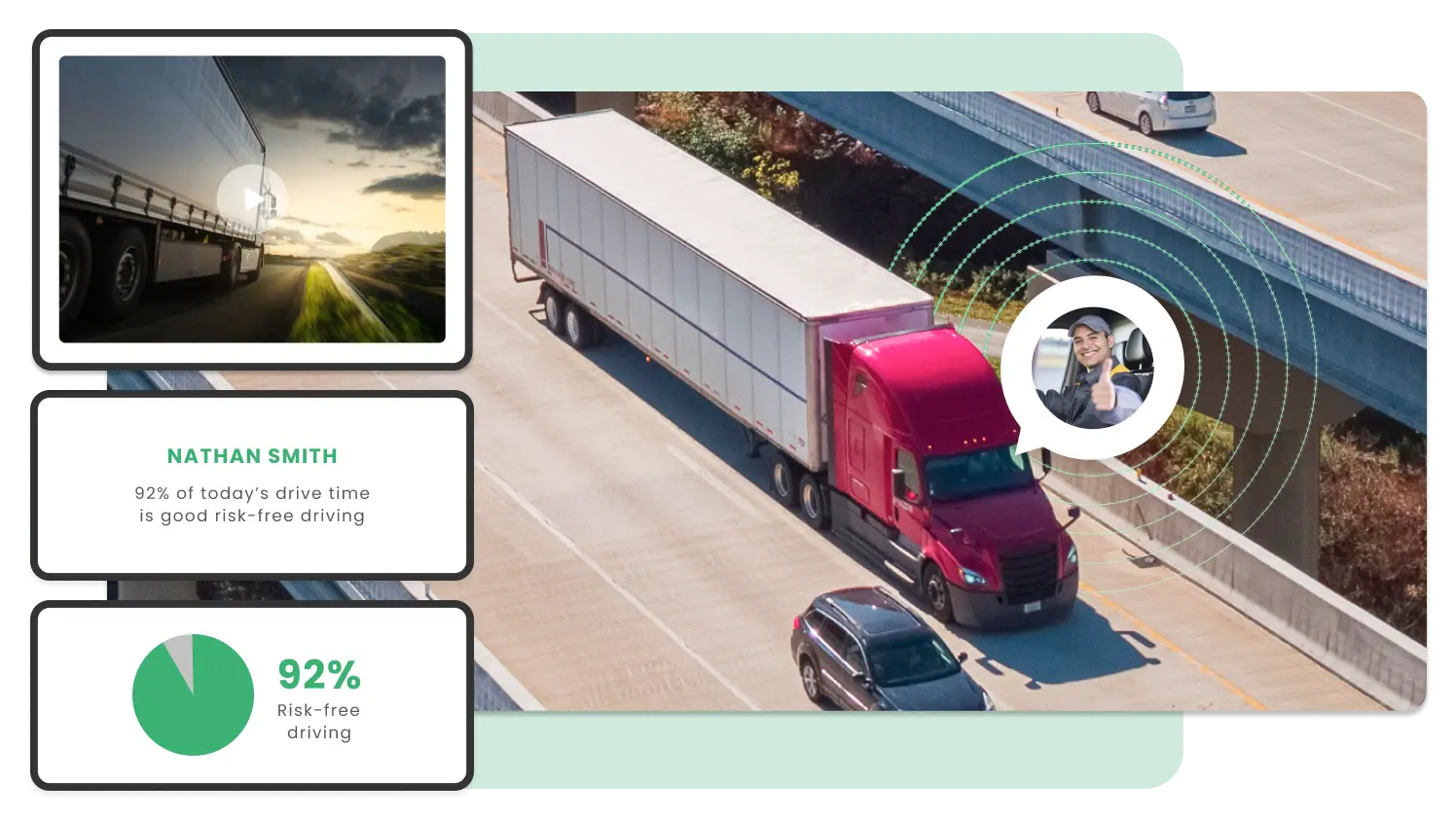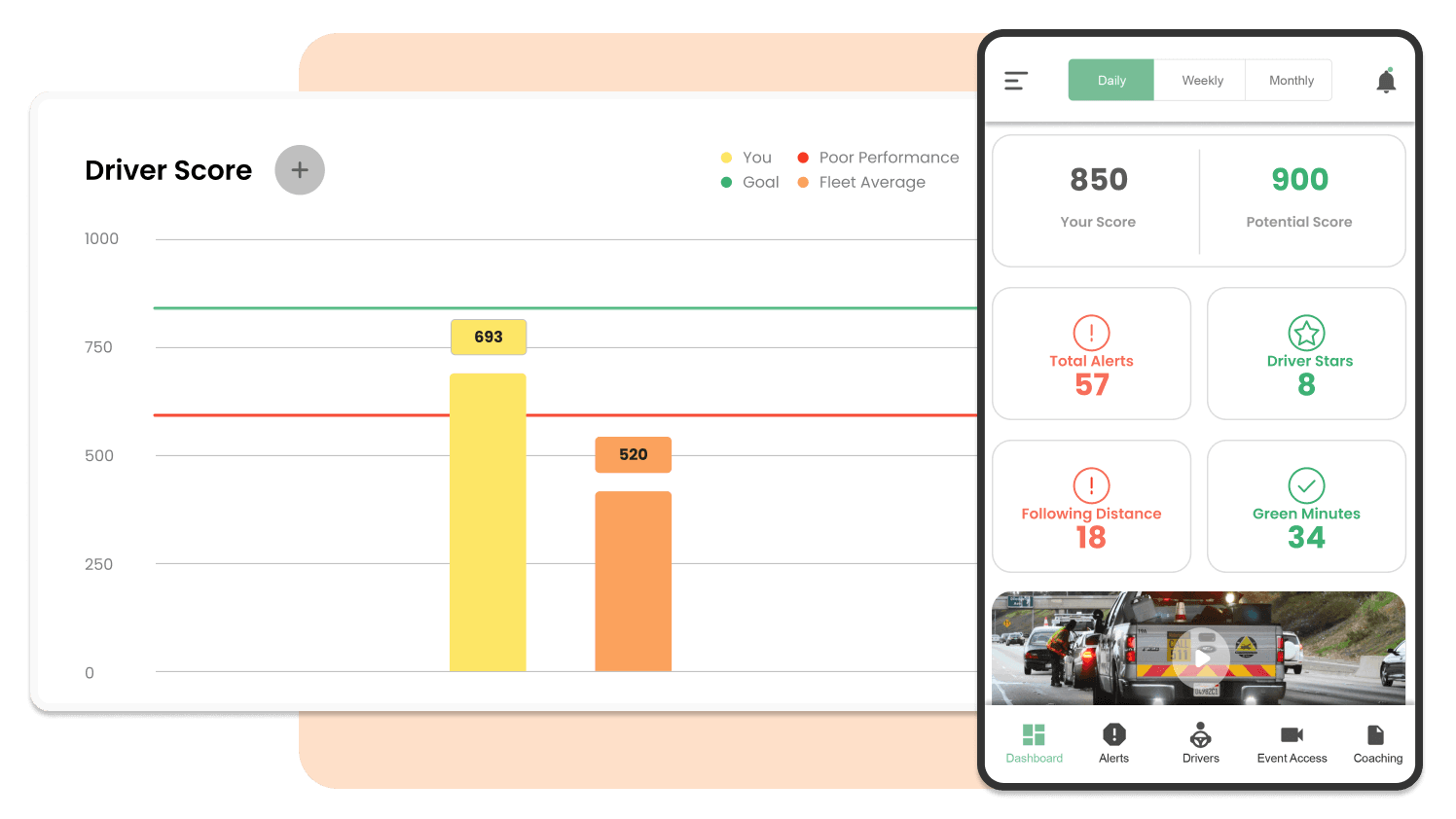5 Ways to Transform Fleet Safety from a Cost Center to Cost Saver
By Netradyne & PrePass | November 10, 2023
It should come as no surprise that operational fleet costs are skyrocketing.
- Diesel costs have risen by 61% since 2017.
- Insurance premiums increased 22.5% from 2019 to 2021 and continue to rise in 2023.
- Driver compensation averaged 90.7 cents a mile in 2022 with wages rising more than 15%.
At the same time, freight rates and sector pressures are causing declines in fleet revenues and profit margins. This margin-challenging environment requires fleet owners to reimagine their businesses.
How can you adapt your fleet to survive these turbulent times? Let’s take a look at five lessons shared by Netradyne and PrePass in the webinar, “Transforming Safety from a Cost Center to Cost Saver.”
#1: Make safe driver behavior a priority
The best way for fleets to save money is to operate safely. Safe driving saves fuel, time, money and lives. Reducing speeding or rapid acceleration can improve fuel economy by 15% to 30%, according to U.S. Department of Energy research.
Another safety tip that can slash fuel consumption is a weigh station bypass. Not only can bypasses minimize safety problems at busy weigh stations, it can also slash fuel consumption. Each bypass saves a half-gallon of fuel, five minutes of a driver’s time and $8.50 in operational costs. PrePass subscribed trucks bypass an average of 12 times per month, meaning a carrier with ten trucks will save sixty gallons of fuel and $1,020 every month, and its drivers will be on the road for ten more hours.
But if qualified fleets want to bypass weigh stations, or bypass them more often, they must improve their safety records and lower their Inspection Selection System (ISS) score. With a comprehensive software platform for inspection records, fleets can assess safety risks and monitor their trucks' performance. This data analysis might uncover that maintenance issues are leading to violations during an inspection or that excessive speed is a concern. When fleets can access and understand key safety data, they can adjust their safety practices.
#2: Reduce moving and toll violations
Moving and toll violations can quickly add up. For example, in California, a texting and driving ticket alone might cost a fleet an $11,000 fine and raise its safety score. A higher safety score has consequences. It can:
- Limit access to high-paying loads,
- Increase insurance premiums,
- Accelerate audit risks, and
- Reduce a fleet’s ability to bypass weigh stations.
Fleets can address risky behavior, like aggressive driving, when it occurs with real-time coaching. Driver safety ALERTS™ notify drivers when approaching road hazards, such as work zones, dangerous slowdowns, traffic congestion, gusty wind areas, steep grades, brake check areas, available parking, runaway truck ramps, rest areas and more. Real-time ALERTS help drivers prepare to slow down or change routes, turning safety notifications into efficiency tools too.
Data helps fleets identify incorrect tolls and track toll spending on specific routes. Often, incorrect toll charges are buried in stacks of agency invoices. Subscribing trucks in a low-cost toll management service, such as PrePass Tolls, consolidates toll invoices for all trucks and transactions to help identify toll charge anomalies. A toll management service can automatically identify improper toll charges and keep expenses down. PrePass handles toll disputes on its customer’s behalf, saving them time, money and headaches.

#3: Improve Accident Litigation
The American Transportation Research Institute found that the average accident verdict or settlement costs a fleet $367,757. Holistic exoneration is the most effective method to protect fleets in litigation.
Video cameras that provide 360-degree, high-definition visibility around the truck at all times can help exonerate drivers in court, or even at the scene of an incident. No matter which party is at fault, settling the matter quickly is key to minimizing resources spent on litigation.
To help reduce litigation costs, fleets must develop processes and practices that create a strong safety culture. Instead of focusing on the crash event, attorneys now target fleet safety records. A proactive weekly coaching approach, as opposed to the old standard of quarterly safety meetings, can help fleets prove they support a culture of safety and continuous improvement. Sophisticated camera platforms can provide automated weekly driver coaching and proof of completion.
#4: Run a Lean Back Office
Technology is a powerful tool that fleets can use to their advantage to operate more efficiently. Options like virtual coaching can help fleets save money and increase safety.
Intelligent AI camera platforms like Driver•i analyze 100% of the drive and compile data into straightforward reports and a driver score, enabling managers to confidently set a structure for rewards and easily assess who needs additional attention. Additionally, automated coaching takes the burden off the manager, providing drivers with automatic recognition for good driving, and weekly coaching sessions for their riskiest events.
Drivers can self-coach by reviewing the sessions, which include specific suggestions on how to increase their score. This empowers drivers to take charge of their career and improves performance by encouraging healthy competition between drivers.
A recent study of 2,000+ drivers using Driver•i cameras showed that those using the self-coaching app had scores 51 points higher than those not using it. Fleets with 70%+ drivers using the app saw a 12% improvement in overall safety vs. those not using it.

#5: Keep Talent
Retaining talent can lead to substantial cost savings for fleets. A study by the Upper Great Plains Transportation Institute puts the cost of replacing a driver at close to $8,000. That means a fleet that loses just four drivers in a year incurs $32,000 in expenses to replace those drivers. Drivers view good pay and benefits, fleet-provided weigh station bypass service, and time at home as top benefits that keep them with a company, in that order. Giving drivers a bypass service helps them go from point A to point B more reliably and often means reaching home rather than spending another night on the road.
Smart incentives also help fleets retain drivers. Coupled with onboard technology, drivers can open an app to see how they are tracking toward their goals and receive steps or tips to help them follow the most efficient route. When fleets empower drivers, offer visibility into their driving habits and goals and reward safer driving practices, remarkable improvements occur.
Summary
Inadequate fleet safety clearly contributes to rising operational costs. Making safety a priority for your fleet can result in real operational efficiencies, increased revenue and improved safety ratings. All of these can also improve driver engagement, safety and help you retain your talent. How you adapt your safety approach can really help you improve your bottom line.